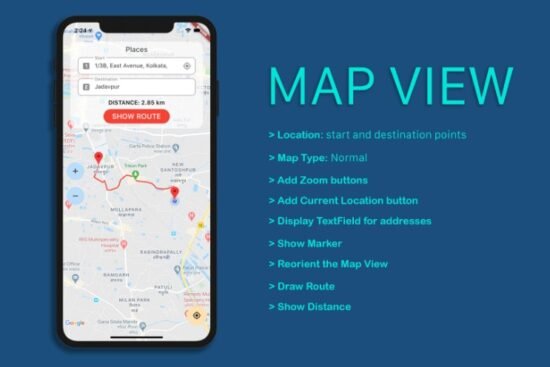
A Flutter package that makes navigation and routing easy.
Learn more at vrouter.dev
Here are a few things that this package will make easy:
- Automated web url handling
- Nesting routes
- Transition
- Advanced url naming
- Reacting to route changing
- Customizable pop events
- And much more…
Index
Getting started
VRouter
VRouter is a widget which handles the navigation, it acts as a MaterialApp but also takes a routes arguments.
VRouter(
debugShowCheckedModeBanner: false, // VRouter acts as a MaterialApp
routes: [...], // Put your VRouteElements here
)
VRouteElements
VRouteElements are the building blocs of your routes.
Note that they are not widgets but the way you use them is very similar to widgets.
VWidget
VWidget maps a path to a widget:
VWidget(path: '/login', widget: LoginScreen())
VGuard
VGuard allows you to take actions when the route is accessed/leaved:
VRouteRedirector
VRouteRedirector redirects from a route to another:
VRouteRedirector(path: '/old/home', redirectTo: '/home')
VNester
VNester are used when you need to nested widgets instead of stacking them:
VPopHandler
VPopHandler helps you control pop events:
Navigation
Navigating is easy, just access VRouter with context.vRouter and navigate:
context.vRouter.to('/home'); // Push the url '/home'
context.vRouter.toSegments(['home', 'settings']); // Push the url '/home/settings'
Useful notions
Composition
VRouteElements are designed like widgets: compose them to create the route you need.
Compose VRouteElements
To compose VRouteElements, use the stackedRoutes attribute (or the nestedRoutes attribute for VNester):
Create custom VRouteElements
You can even create your own VRouteElement, as you extend VWidget. You just need to extends VRouteElementBuilder:
and then use this VRouteElement as any other:
VRouter(
routes: [
HomeRoute(),
...
],
)
This can be used to:
- Separate you different routes in different VRouteElement
- Create reusable VRouteElement
- Use
static Stringto organise your paths
Note: you often want to use a shared VNester in different VRouteElementBuilders, for this specific use case, see vrouter.dev/Custom VRouteElement And Scaling
Path
Relative path
Paths can be relative: if you don’t start your path with /. If you use null, the path will be the one of the parent:
Path parameters
Paths can have path parameters, just use “:” in front of the path parameter’s name:
VWidget(path: '/user/:id', widget: UserScreen())
And access it in your widgets using:
context.vRouter.pathParameters['id'];
Wildcards
Wildcards are noted * and there are of one of two types:
- Trailing wildcards (a path ending with *) will match everything
- an in-path wildcard (a wildcard between slashes) will match one word
// Redirects any path to '/unknown'
VRouteRedirector(path: '*', redirectTo: '/unknown')
Path parameters regexp
Path parameters can use regex, just put the regex in parentheses. This is often used in VRedirector to redirect any unknown route:
// The path parameter name is “bookId” and it uses the regex “\d+” to match only digits
VWidget(path: r':bookId(\d+)', widget: BookScreen())
Note that such a VRedirector should be used as your last route otherwise it will always be matched.
Aliases
Use aliases for multiple paths:
// Matches '/settings' and '/other'
VWidget(path: '/settings', aliases: ['/other'], widget: SettingsScreen())
VRedirector
You often want to redirect or stop the current redirection in VGuard and VPopHandler. For that purpose, you get a VRedirector:
VRouterData
VRouter contains data (such as the path or path parameters) that you might want to access in your widget tree. There are 2 ways of doing do:
Go Beyond
We have just scratched the surface of what VRouter can do. Here are a few other things which you might like.
Initial url
Maybe you want to redirect people to a certain part of your app when they first launch it, then use initialUrl:
VRouter(
initialUrl: '/home',
routes: [...],
)
Logs
By default, VRouter shows logs of every navigation events.
You can remove these logs using VLogs.none:
VRouter(
logs: VLogs.none,
routes: [...],
);
Named route
You might have to access a deeply nested VRouteElement and don’t want to have to write the full url. Just give a name to this VRouteElement:
VWidget(path: 'something', widget: SomeWidget(), name: 'deep')
And navigate using toNamed:
context.vRouter.toNamed('deep');
Transitions
You can either specify a default transition in VRouter, or a custom one in VWidget or VNester
Much more
There is so much more that this package can do, check out the example
or have a look at the vrouter.dev website for more documentation and more examples.
Also don’t hesitate to join us on discord !















